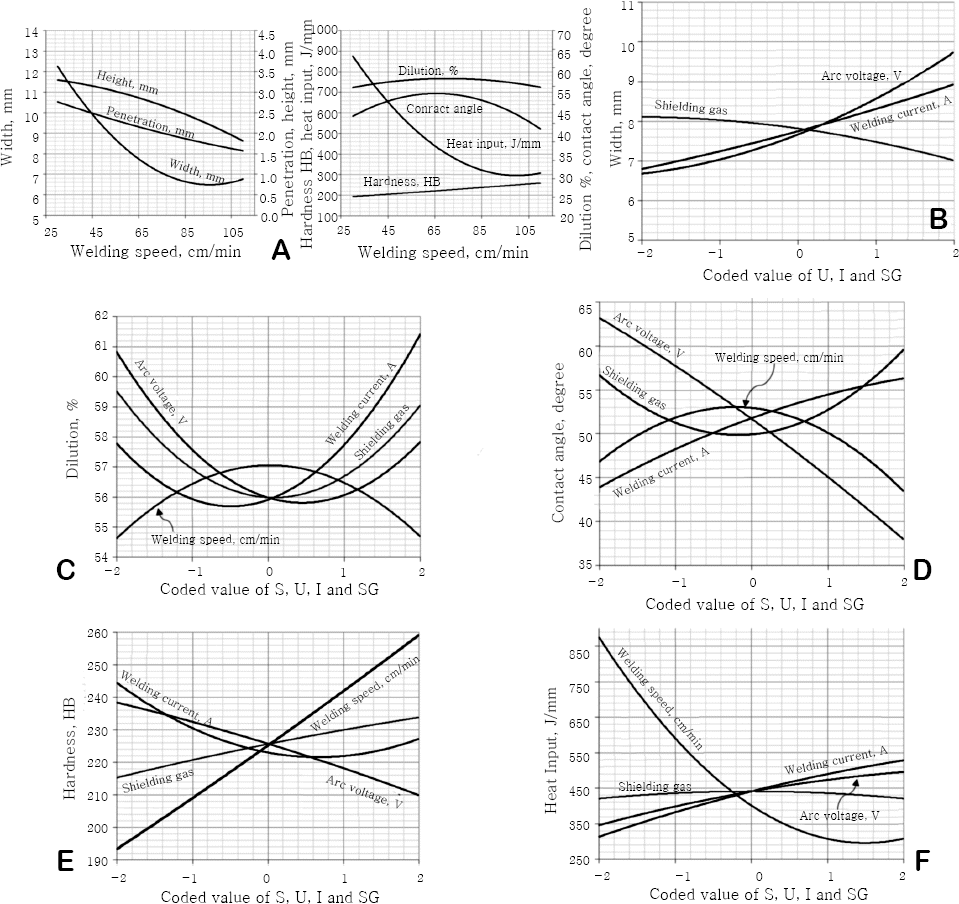1. D.S. Correia, C.V. Goncalves, S.S.. da Cunha Jr, and V.A. Ferraresi, Comparison between genetic algorithms and response surface methodology in GMAW welding optimization,
J. Mater. Process Tech. 160 (2005) 70ŌĆō76.
[CROSSREF] 2. P.K. Palani and N. Murugan, Optimization of weld bead geometry for stainless steel claddings deposited by FCAW,
J. Mater. Process Tech. 190 (2007) 291ŌĆō299.
[CROSSREF] 3. C. Doumanidis and Y.M. Kwak, Multivariable adaptive control of the bead profile geometry in gas metal arc welding with thermal scanning,
Int. J. Pres. Ves. Pip. 79 (2002) 251ŌĆō262.
[CROSSREF] 4. T.C. Nguyen, D.C. Weckman, D.A. Johnson, and H.W. Kerr, High speed fusion weld bead defects,
Sci. Technol. Weld. Joi. 11(6) (2006) 618ŌĆō633.
[CROSSREF] 5. T.C. Nguyen, D.C. Weckman, and D.A. Johnson, The discontinuous weld bead defect in high-speed gas metal arc welds, Weld. J. 86 (2007) 360ŌĆō3725.
6. E. Karadeniz, U. Ozsarac, and C. Yildiz, The effect of process parameters on penetration in gas metal arc welding processes,
Mater. Des. 28 (2007) 649ŌĆō656.
[CROSSREF] 7. R. Choteborsky, M. Navratilova, and P. Hrabe, Effects of MIG process parameters on the geometry and dilution of the bead in the automatic surfacing,
Res. Agr. Eng. 57(2) (2011) 56ŌĆō62.
[CROSSREF] 8. P. Sreeraj, T. Kannan, and S. Maji, Optimization of weld bead geometry for stainless steel cladding deposited by GMAW, Am. J. Eng. Res. 02(05) (2013) 178ŌĆō187.
9. P. Sreeraj, T. Kannan, and S. Maji, Prediction and optimization of weld bead geometry in gas metal arc welding process using RSM and fmincon,
J. Mech. Eng. Res. 5(8) (2013) 154ŌĆō165.
[CROSSREF] 10. P. Sreeraj, T. Kannan, and S. Maji, Prediction and optimization of stainless steel cladding deposited by GMAW process using response surface methodology ANN and PSO, Int. J. Eng. Sci. 3(5) (2013) 30ŌĆō41.
11. P. Sreeraj, T. Kannan, and S. Maji, Optimization of GMAW process parameters using particle swarm optimization,
ISRN Metall. (2013) 1ŌĆō10.
[CROSSREF] [PDF] 12. I.S. Kim, K.J. Son, Y.S. Yang, and P.K.D.V. Yaragada, Sensitivity analysis for process parameters in GMA welding processes using a factorial design method,
Int. J. Mach. Tool. Manu. 43 (2003) 763ŌĆō769.
[CROSSREF] 13. I. Boiko and D. Avisans, Study of shielding gases for MAG welding, Mater. Phys. Mech. 16 (2013) 126ŌĆō134.
14. R.H. Myers, D.C. Montgomery, and C.M. Anderson-Cook. Response Surface Methodology - Process and product optimization using designed experiments. (2009), Hoboken, New Jersey: John Wiley & Sons; p. 705
15. M.A. Bezerra, R.E. Santelli, E.P. Oliveira, L.S. Villar, and L.A. Escaleira, Response surface methodology (RSM) as a tool for optimization in analytical chemistry,
Talanta. 76 (2008) 965ŌĆō977.
[CROSSREF] [PUBMED] 16. O. Popovic, R. Prokic-Cvetkovic, M. Burzic, and Z. Milutinovic, The effect of heat input on the weld metal toughness of surface welded joint, 14thInt. Res./Exp. Conf., TMT 2010. 11-18. (September., 2010) 61ŌĆō64.
17. C.L. Jennery and A. OŌĆÖBrien. Welding Handbook - Welding Science and Technology. (2001), Miami, Florida: American Welding Society; 985 (54)
18. A.I. Khuri and Mukhopadhyay. S, Response surface methodology,
WIREs Comp. Stat. 2 (2012) 128ŌĆō149.
[CROSSREF] [PDF]






 PDF Links
PDF Links PubReader
PubReader ePub Link
ePub Link Full text via DOI
Full text via DOI Download Citation
Download Citation Print
Print



